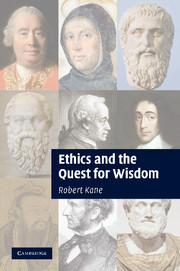Book contents
- Frontmatter
- Contents
- Acknowledgements
- 1 Introduction: pluralism and uncertainty
- 2 Openness
- 3 The retreat
- 4 The moral sphere
- 5 Fact and value
- 6 Value experiments
- 7 Virtues, excellences and forms of life
- 8 The fourth dimension
- 9 Aspiration
- 10 Wisdom
- 11 Objective worth
- 12 The Bach crystals
- 13 Human flourishing
- 14 The Faust legend and the mosaic
- 15 The good and the right (I): intuitionism, Kantianism
- 16 The good and the right (II): utilitarianism, consequentialism
- 17 The good and the right (III): contractualism
- 18 Politics, public morality and law: justice, care and virtue
- References
- Index
16 - The good and the right (II): utilitarianism, consequentialism
Published online by Cambridge University Press: 07 September 2010
- Frontmatter
- Contents
- Acknowledgements
- 1 Introduction: pluralism and uncertainty
- 2 Openness
- 3 The retreat
- 4 The moral sphere
- 5 Fact and value
- 6 Value experiments
- 7 Virtues, excellences and forms of life
- 8 The fourth dimension
- 9 Aspiration
- 10 Wisdom
- 11 Objective worth
- 12 The Bach crystals
- 13 Human flourishing
- 14 The Faust legend and the mosaic
- 15 The good and the right (I): intuitionism, Kantianism
- 16 The good and the right (II): utilitarianism, consequentialism
- 17 The good and the right (III): contractualism
- 18 Politics, public morality and law: justice, care and virtue
- References
- Index
Summary
DEONTOLOGICAL AND TELEOLOGICAL THEORIES
Is the moral sphere theory (MST) a deontological or consequentialist ethical theory? Many things said in the previous chapter suggest that it lies on the deontological side of this divide, even if it is not strictly either a Kantian or intuitionist theory. But we should not jump to conclusions, since the deontological/consequentialist distinction can be drawn in different ways.
A common way of understanding the distinction is in terms of the relative priority given to the good and the right. Quoting Rawls, “the two main concepts of ethics are the right and the good ….The structure of an ethical theory is, then, largely determined by how it defines and connects these two basic notions” (1971: 24). Consequentialist ethical theories are teleological theories in Rawls' sense. They give priority to the good over the right, defining the rightness of actions (principles, motives, etc.) in terms of their promotion of the good. Deontological theories, by contrast, give priority to the right over the good, defining right actions (principles, motives, etc.) independently of their promotion of the good.
Viewed in this way, the MST might seem to be a teleological theory in one respect. For priority is given in the MST to the promotion of an ultimate good or value, namely objective worth or fourth-dimensional value. Right actions and principles are thus defined with respect to the promotion of the good, albeit a certain kind of good: Fourth-dimensional value includes all the value realized by different beings in the first three dimensions of value that is objectively worthy of being realized.
- Type
- Chapter
- Information
- Ethics and the Quest for Wisdom , pp. 196 - 224Publisher: Cambridge University PressPrint publication year: 2010



